Here are brief bios of the artists, composers, and writers considered in the class, listed in order of birth.
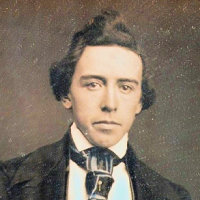 |
Louis Moreau Gottschalk, 1829–69. American composer.
Starting as a child prodigy in New Orleans, Gottschalk basically composed pieces to show off his own skills. Although rejected by the Paris Conservatoire, he made a name for himself there, impressing other virtuosi such as Liszt and Chopin. Even when he returned to the Americas, he spent most of his life in the Caribbean and Latin America, whose musics he embraced in his own.
|
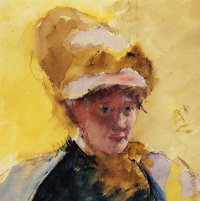 |
Mary Cassatt, 1844–1926. American painter.
The daughter of a wealthy Philadelphia family, Cassatt studied in Paris and settled there in 1874. She became friends with the Impressionists, especially Degas, and exhibited in four of their shows. An early feminist, her own work featured especially the everyday lives of women. She also had an influence in persuading her wealthy friends back home to buy Impressionist paintings.
|
 |
William Merritt Chase, 1849–1916. American painter.
When working in Saint Louis, Chase caught the attention of some wealthy collectors, who funded a two-year study tour in Europe (mainly in Munich). He returned to America in 1878 as an artist versed in the heightened color and free brushwork of Impressionism, and prospered in that context both as a painter of society subjects and as a teacher.
|
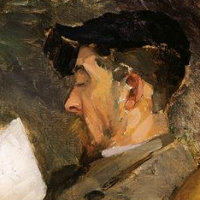 |
Theodore Robinson, 1852–96. American painter.
Born in Vermont, Robinson moved to Paris in 1876 to study at the École des Beaux-Arts, meeting with some success. He returned to France in 1884, and settled in the house next door to Claude Monet, remaining there for a decade. Although Robinson's style is generally tamer, the two were apparently close enough friends to consult on a regular basis.
|
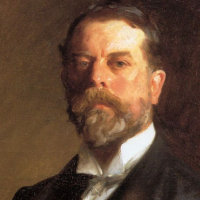 |
John Singer Sargent, 1856–1925. American painter.
Sargent was born in Florence, the son of wealthy cultured parents, and much of his career was spent in Europe, although his rising fame as the preeminent society portraitist of his day also took him back to America. He is said to have hated portraiture, though, and diversified into landscapes and watercolors for his own satisfaction.
|
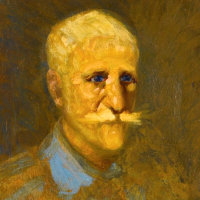 |
Maurice Prendergast, 1859–1924. American painter.
Born in Canada, Prendergast was a member of the group of artists aound Robert Henri, but developed a lighter, more colorful style than the others, influenced particularly by developments in France. At first, he painted mainly in watercolor, but later moved to oil painting and prints.
|
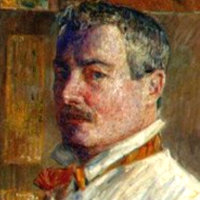 |
Childe Hassam, 1859–1935. American painter.
Despite the suggestions of his name, Childe Hassam came from long-established New England stock. At first largely self-taught as a painter, he went to France in 1886 to study at the Académie Julian, but quickly felt the curriculum there too restrictive and began to emulate the Impressionists instead. A prolific painter, he was influential in promoting the Impressionist style among American collectors.
|
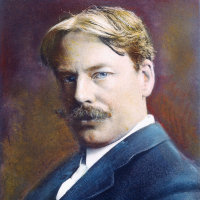 |
Edward MacDowell, 1861–1901. American composer.
Pianist and composer Edward MacDowell studied at the Paris Conservatoire 1876–79, but went from there to Frankfurt and remained in Germany for many years, teaching, composing, and performing. His straightforward lyrical style found favor with American audiences at the time, but now he is best remembered for the MacDowell Colony set up by his widow (also a pianist and his former student) on their property in New Hampshire to support artist residencies.
|
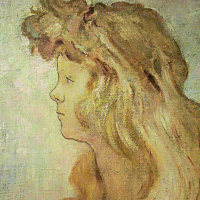 |
Loie Fuller, 1862–1928. American dancer.
Growing up in an artistic family in Chicago, Fuller began her career as a child performer, then joined Buffalo Bill's Wild West Show, then moved to New York. As a dancer, she developed a new form called the Serpentine Dance in which the movements of her draperies under constantly changing light became poetic in their own right. Having trouble gaining respect in the US, she moved in 1892 to France, where she became a sensation. Rodin said that she "paved the way for the art of the future."
|
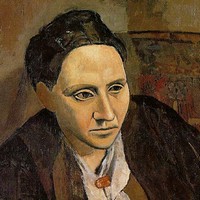 |
Gertrude Stein, 1874–1946. American poet and collector.
Gertrude Stein comes into this course as the American expatriate whose salon in Paris hosted the likes of Hemingway, Fitzgerald, Pound, Matisse, and especially Picasso. But of course she was a Modernist poet in her own right, writing in a terse enigmatic style that is often quoted.
|
 |
Arthur Dove, 1880–1946. American Painter.
Dove, who spent some time in France in the ferment of the first decade of the century, is credited with painting the first abstract pictures in America, although he did not exhibit them at the time.
|
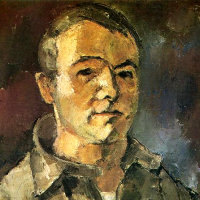 |
Max Weber, 1881–1961. American painter.
Born in Bialystok in Russian Poland, Weber came to Brooklyn with his Orthodox Jewish parents in 1891. He studied in New York and then in Paris, where he came into contact with the early Cubists. Returning to American in 1909, he was one of the first to paint in a Cubist style, a manner in which he reached his peak in the teens of the century. Later, he turned to specifically Jewish themes treated in a less confrontational style.
|
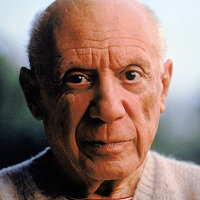 |
Pablo Ruiz Picasso, 1881–1973. Spanish painter, printmaker, and sculptor.
Picasso's invention of Cubism around 1910 (with Georges Braque) made him arguably the most important figure in 20th-century art. However, his entire career from precocious youth to energetic old age was distinguished by rapid changes of style, constant experimentation with new media, and a gift for finding the exact image to capture an historical moment, as in his Guernica of 1937.
|
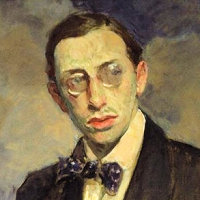 |
Igor Stravinsky, 1882–1971. Russian-American composer.
Starting as an enfant terrible in Paris with the ballets he wrote for Serge Diaghilev, he gradually pared back his resources, developing a neo-classical style between about 1930 and 1955, but eventually turning his back on tonality.
|
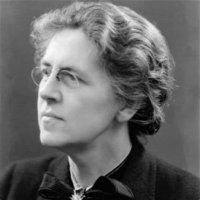 |
Nadia Boulanger, 1887–1979. French composer and teacher.
Nadia Boulanger became one of the great composition teachers of the 20th century, helping shape the careers of Virgil Thomson, Aaron Copland, Elliot Carter, and many others. Although a composer herself, she put her own work aside to support that of her younger sister Lili, whom she called the true genius in the family.
|
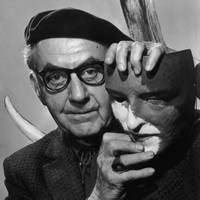 |
Man Ray, 1890–1976. American artist.
Man Ray was born Emmanuel Radinsky, but treated his abbreviated pseudonym as a single entity. He began as a painter, then fell into the circle of Marcel Duchamp in New York and began working in every possible medium, whether old or invented, such as his radical experiments with photography and film. He moved to Paris in 1921 and (with a decade's break for WW2) remained there the rest of his life, a major influence in the fields of Dada, Surrealism, and the avant-garde in general.
|
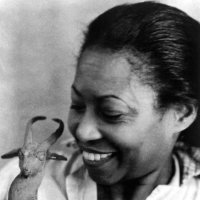 |
Augusta Savage, 1892–1962. American sculptor.
A leading sculptor of the Harlem Renaissance, Savage was one of only two African Americans commissioned to create works for the 1939 New York World's Fair. The result, Lift Every Voice and Sing, showing a group of Black singers standing like the strings of a harp, was widely reproduced.
|
 |
F. Scott Fitzgerald, 1896–1940. American writer.
Fitzgerald had two major successes to his credit—This Side of Paradise (1920) and The Beautiful and the Damned (1922)—before moving to Paris, where he wrote his masterpiece, The Great Gatsby (1925). Relinquishing his position as a leading light of the "Lost Generation" of expatriates in Paris, he returned to America around the time of his wife Zelda's breakdown, then gradually descended into alcoholism himself. Despite mediocre success at first, Gatsby is now recognized as one of the great American novels.
|
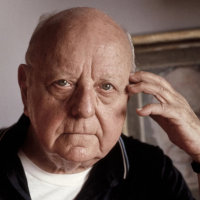 |
Virgil Thomson, 1896–89. American composer.
Born in Kansas City, Thomson studied at Harvard, then moved to Paris for 15 years, staying on after his study with Nadia Boulanger. He sat at the feet of Gertrude Stein, who wrote the libretti for his first two operas, Four Saints in Thress Acts (1928) and The Mother of Us All (1947), the latter written after his return to America. Although associating with figures of the avant garde like Stein, his musical style was always approachable, and he valued market success over aesthetic pretensions.
|
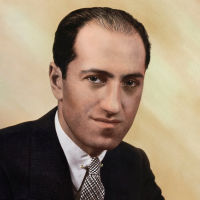 |
George Gershwin, 1898–1937. American composer.
Born Jacob Gershwine in New York to Jewish emigrants from Eastern Europe, he studied piano and composition, but soon found his vocation as a songwriter, mostly with his elder brother Ira (born 1896). Most of his songs have become crossover standards, as have his orchestral works Rhapsody in Blue (1924) and An American in Paris (1928). Most of his stage works are primarily containers for his songs, but his 1935 opera Porgy and Bess is an exception, a closely-developed study of African-American life.
|
 |
Alexander Calder, 1898–1976. American sculptor.
Though the son and grandson of sculptors, Calder initially trained as an engineer. But his mechanical ingenuity burgeoned in other directions, and he went to Paris in 1926 to study at the Académie Julian. He remained in France for seven years, much of it spent in developing miniature working models of various circus acts. Much of his later work, including the mobiles that made his name and the monumental stabiles that cemented his reputation, shows a similar sense of play and exploration.
|
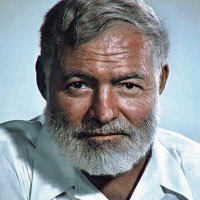 |
Ernest Hemingway, 1899–1961. American writer.
In contrast to his friend and fellow-member of the "Lost Generation" of American expatriates, Scott Fitzgerald, Hemingway had not published a novel by the time he arrived in Paris in 1921, but he would go on to write seven novels and numerous stories that eventually won him the Nobel Prize in Literature. He served as an ambulance driver in WW1 and fought in the Spanish Civil War (subject of his 1940 novel For Whom the Bell Tolls), working to maintain the persona as a man of action with a blunt but invigorating style.
|
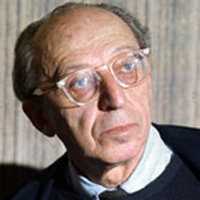 |
Aaron Copland, 1900–1990. American composer.
Trained in Paris, Copland began writing in the style of the European avant garde, but in his ballet commissions in the 1930s and 1940s, such as Billy the Kid, Rodeo, and Appalachian Spring, he developed the open folk-inflected style that has become, for many people, the sound of American music.
|
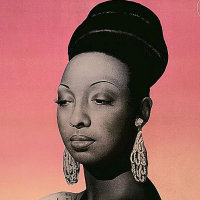 |
Josephine Baker, 1906–75. American dancer.
Baker (Freda Josephine McDonald) was raised by a single Black mother in St. Louis. She made money as a teenager by dancing in the streets, then did a stint as a chorus dancer on Broadway, then came to Paris in 1925, at the age of only 19. Her first appearances in Le Revue Nègre were a sensation and before long she was in demand all over Europe. She worked for the Résistance during WW2, then embarked on a second (third?) career on both sides of the Atlantic of political activism and philanthropy.
|
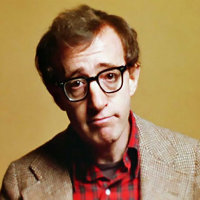 |
Woody Allen, 1935– . American writer and filmmaker.
Allen (born Allan Stewart Konigsberg) began wrting comic material for other comedians, then developed his own show and published under his own name. Beginning in 1969, he directed a string of madcap comedy films with himsself in the lead, but starting with Annie Hall in 1977, these have become more romantic and/or serious. He has continued to direct (now mostly with other actors), and holds a record for the most Oscar nominations (16), including many outright wins of this and other major awards.
|





























































